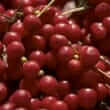Background
- Schisandra (Schisandra chinensis), also spelled schizandra, is a vining shrub native to northern and northeast China, as well as areas of Korea and Russia.
- Schisandra berries are called wu wei zi in Chinese, translated as "five-flavor fruit," based on their salty, sweet, sour, pungent, and bitter flavors. The dried fruit is formed into powder, tinctures, and wine, and used in capsules and teas either as a single ingredient or in a combination herbal product.
- The berries of schisandra have been used in traditional Chinese medicine (TCM) to increase the body's resistance to stress, for liver protection, immune system effects, and as a "harmonizing agent" in herbal formulas. In Russia it has been used for increasing attention, concentration, coordination, endurance, and strength.
References
- Bol'shakova, IV, Lozovskaia, EL, and Sapezhinskii, II. [Antioxidant properties of a series of extracts from medicinal plants]. Biofizika 1997;42(2):480-483.
View Abstract - Chang, J and Xie, J. [Total synthesis of schizandrin, the main active ingredient isolated from the Chinese herbal medicine fructus schizandrae]. Yao Xue Xue Bao. 1998;33(6):424-428.
View Abstract - Chen, J and Tian, G. [Ecological investigation on Schisandra chinensis (Turcz.) Baill. of the Changbai Mountain]. Zhongguo Zhong Yao Za Zhi. 1992;17(4):204-5, 255.
View Abstract - Cyong, JC, Ki, SM, Iijima, K, et al. Clinical and pharmacological studies on liver diseases treated with Kampo herbal medicine. Am J Chin Med 2000;28(3-4):351-360.
View Abstract - Greenlee, H, Atkinson, C, Stanczyk, FZ, et al. A pilot and feasibility study on the effects of naturopathic botanical and dietary interventions on sex steroid hormone metabolism in premenopausal women. Cancer Epidemiol Biomarkers Prev. 2007;16(8):1601-1609.
View Abstract - Iwata, H, Tezuka, Y, Kadota, S, et al. Identification and characterization of potent CYP3A4 inhibitors in Schisandra fruit extract. Drug Metab Dispos. 2004;32(12):1351-1358.
View Abstract - Kassler, WJ, Blanc, P, and Greenblatt, R. The use of medicinal herbs by human immunodeficiency virus-infected patients. Arch Intern Med 1991;151(11):2281-2288.
View Abstract - Kim, BH, Lee, YS, and Kang, KS. The mechanism of retinol-induced irritation and its application to anti-irritant development. Toxicol Lett. 12-15-2003;146(1):65-73.
View Abstract - Li, Y, Xu, C, Zhang, Q, et al. In vitro anti-Helicobacter pylori action of 30 Chinese herbal medicines used to treat ulcer diseases. J Ethnopharmacol. 4-26-2005;98(3):329-333.
View Abstract - Melhem, A, Stern, M, Shibolet, O, et al. Treatment of chronic hepatitis C virus infection via antioxidants: results of a phase I clinical trial. J Clin Gastroenterol. 2005;39(8):737-742.
View Abstract - Panossian, A and Wikman, G. Pharmacology of Schisandra chinensis Bail.: an overview of Russian research and uses in medicine. J Ethnopharmacol. 7-23-2008;118(2):183-212.
View Abstract - Ram, VJ. Herbal preparations as a source of hepatoprotective agents. Drug News Perspect. 2001;14(6):353-363.
View Abstract - Wang, K, Tong, YY, and Song, WZ. [Determination of the active ingredients in Chinese drug wuweizi (Schisandra chinensis) by TLC-densitometry]. Yao Xue Xue Bao. 1990;25(1):49-53.
View Abstract - Wang, YH, Gao, JP, and Chen, DF. [Determination of lignans of Schisandra medicinal plants by HPLC]. Zhongguo Zhong Yao Za Zhi. 2003;28(12):1155-1160.
View Abstract - Xin, HW, Wu, XC, Li, Q, et al. Effects of Schisandra sphenanthera extract on the pharmacokinetics of tacrolimus in healthy volunteers. Br J Clin Pharmacol. 2007;64(4):469-475.
View Abstract







